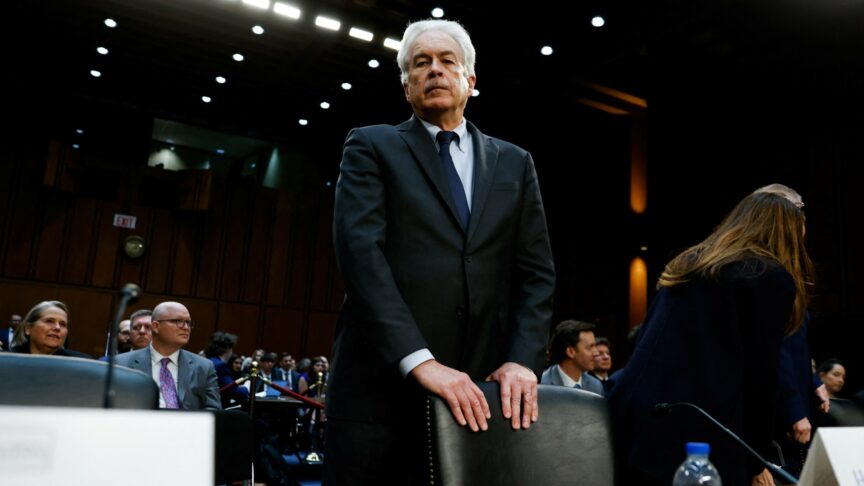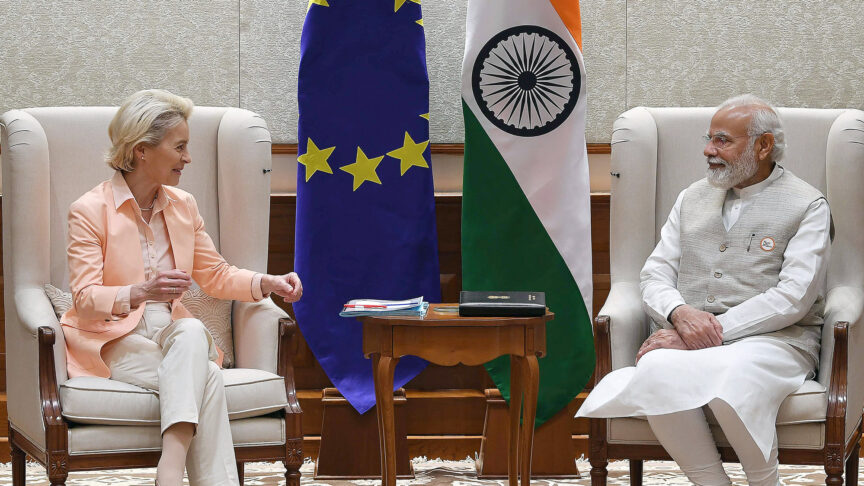Trump cannot bring Europe and China together
Donald Trump’s attack on the international trading system is changing the EU's relationship with China
US President Donald Trump has proven very effective at alienating friends and partners throughout Europe and beyond. His rants against international institutions, his imposition of tariffs for spurious reasons of “national security”, his tweeted episodes of road rage have all added to the strain. But is it enough to draw China and the EU together on trade? Probably not. Indeed, the two upcoming meetings between top China and European officials will help us understand that more separates the EU and China than just America.
Trump’s threats on Chinese exports have created genuine alarm in Beijing. China is making every effort to avoid publicly escalating its trade dispute with America. But it is also rediscovering the merits of a more engaging policy towards Europe. Chinese authorities have sought to demonstrate to Europe that economic reforms are coming. They have resumed various interrupted dialogues. The issue of reform of the WTO, formerly a no-go area for China, has suddenly become a proposed subject of dialogue with the EU. Beijing officials talk of a joint communiqué on climate – an idea that China ditched last year. The Chinese are now willing to engage on topics that have sat in the pipeline for some time – from geographical indications to civil aviation and the broader investment agreement (even if, alas, human rights remains a hold-out).
All of this will make the upcoming EU-China summit more pleasant. Ultimately, China wants a joint declaration that will staunchly denounce unilateralism and favour multilateral rules. They ought to be able to get such an announcement since the European Council has already pointedly declared its support for multilateral rules.
Chinese Contradictions
But these Chinese policies don’t seem to fit very well with some of China’s other approaches towards Europe. And so even as the Chinese mount an EU charm offensive, they are sticking to divide-and-rule tactics with the other upcoming meeting: the so-called 16+1 meeting that includes China and sixteen Central and Eastern Europe states (eleven of which are member states of the EU, while the other five are from the Western Balkans).
The first point to notice is that two usually separate meetings are being held quite close together. It is unprecedented that a 16+1 meeting takes place only days before the annual EU-China summit. There had been unofficial indications from Beijing that the 16+1 meetings would now take place only once every two years. The Chinese leadership seemed tired of the format and had perhaps realized that this sub-regional format that mixed EU and non-EU participants antagonized the European Union.
Beijing appears to have made the decision to hold the meeting only a month ago, influenced in part by the desire of the Bulgarian presidency of the EU to have it. At a meeting of 16+1 trade ministers in Ningbo this past June, China pushed for an agenda that clearly overlaps with community competences: e-commerce, services, and a broad albeit vague action plan to tie the Belt and Road Initiative with the development strategies of CEE countries. The net impact of this is that instead of spacing out the 16+1 meetings, China will hold two of them within seven months, and on issues that are clear competences of the European Union. True, this may result from instinctive actions by Ministry of Commerce trade hawks rather than a coordinated strategy, but Europe has nonetheless received the message that China’s divide-and-rule tactics persist.
Breaking up Europe is hard to do
But despite all the talk about a fragmenting Europe, China should not count on it at this point. There are multiple reasons for this:
In the East, Poland is trying to resolve its crisis with the EU over constitutional issues, and doesn’t want to add fuel to the fire. It has also become increasingly vocal on the inefficiency of the 16+1 format, and like several other participants, it is disappointed by the lack of actual investment coming from China. Hungarian Prime Minister Viktor Orban is on an offensive to gain ground inside the EU’s conservative camp, which actually ties him more closely to the EU.
The Western Balkans remain the field of choice for China. Of the approximate $10 billion Chinese investment into the 16+1 region, more than half goes to Bosnia, Montenegro, Macedonia, and Serbia. Soon, however, the EU may put in place innovative financial schemes for large-scale projects in that region that will compete with Chinese money while factoring in debt risks.
In Western Europe, recent or on-going acquisitions by Chinese companies again raise the issue of transparency. The stealth purchase of Daimler stock by Geely, a Chinese automobile company; the bid for a take-over of Portugal’s electricity utility and the discovery that China’s state regulator of foreign exchange secretly owned 5 percent of the utility’s shares through a Hong Kong agent show that important problems with Chinese investment remain unsolved.
On key issues of technology acquisition, intellectual property and the role of subsidies, Europeans think much like the present American administration – though not of course on the process for resolving such issues. The EU push for dialogue on the reform of the WTO and Macron’s OECD speech to the same effect, point — as the Americans have done — to glaring holes in the WTO system: an arbitration system that takes too long, the impossibility of acting during the long arbitration process in areas such as subsidies for innovation and intellectual property issues, and the absence of rules for services and new digital industries.
But above all, China has an issue of credibility. The Chinese interrupt, minimize or delay dialogues. They fail to implement announcements and agreements. They play games with the China-EU relationship with any willing third party. This difficult history has taught Brussels a lot about China. It may be thought of as statecraft in Beijing, but it will only go so far with increasingly alert partners.
The Limits of Cooperation
In the end, China and the EU will separately challenge US tariffs at the WTO. They will certainly concur in their preference for multilateral rules — and we will all wish that China actually felt that way in other dimensions. The EU will stick to legal and proportional countermeasures. If Chinese goods are rerouted to Europe as a result of Trump’s tariffs, the EU will likely adopt safeguard measures, again under WTO rules. As for China, it does not really have the potential to escalate against either the US or the EU, because it has so much more to lose. A combined trade surplus with the US and the EU of more than $400 billion makes China vulnerable.
Both China and the EU will resist Donald Trump’s attack on the international trading system. But, for the most part, they will not do so together.
The European Council on Foreign Relations does not take collective positions. ECFR publications only represent the views of their individual authors.


